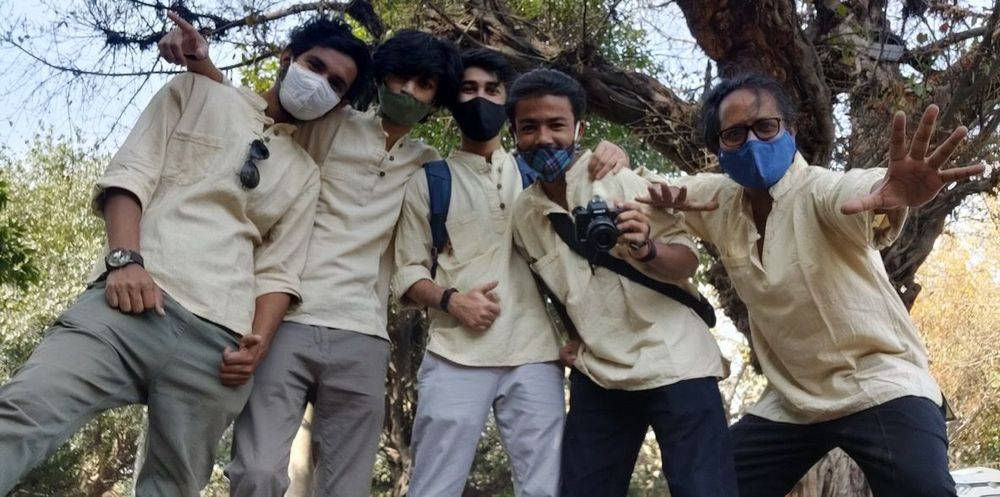top of page



AN INTERVIEW WITH Samudra Kajal Saikia, DIRECTOR
As a filmmaker, please introduce yourself.
Being born and brought up in a family engaged in cultural productions I have had a keen interest in creative exercises from childhood.
As a higher collective form of all the arts, my engagement with film making was actually inevitable. From content development, screenplay writing to technical aspects like VFX, animation and promotional elements, I have been engaged in a number of agencies in last two decades.
My involvement into theatrical performances and then academic studies in the fine arts helped me to develop a wholesome understanding of the creative process.
Why did you become a filmmaker?
In a proverbial manner, it was like, all roads lead to Rome. My interests in multidisciplinary arts and personal temperament in cross-genre experimentation brought me to cinema eventually: where all arts meet.
What are the films or people that had impacts on you and deeply inspired you to become a filmmaker?
I mentioned that I received a creative environment within my family. Then, I got opportunities to meet creative people not only in the major art
institutions across India, but also contemporary practitioners from the significant film and television institutions including
the Film and Television Institutions of India (FTII) and National Institute of Design (NID). Back in 2007, with some of my like-minded friends
started up an animation studio as the creative director in New Delhi with a prime motive to develop content for the silver screen.
Finally getting close to dynamic personalities like Susan Lim and Christina Teenz Tan remains a biggest turning point so far
where I got involved into a series of film-making.
Why you are interested to make animation film, could you please explain about it?
Many in the public domain have misconceptions about animation. Some, by animation only understand cartoon or something
meant for entertaining the young adults. But the fact is: animation is a higher form of art, moreover, making a film essentially means animation.
Instead of calling animation a part of filmmaking, I consider cinema a part of animation.
What is a film, if not running 8, 12 or 24 still frames in a second?

Give some more information about yourself and the films you have made so far?
In directorial roles and screenwriting my engagements remain mostly with short films by independent practitioners, music videos and commercials.
For a couple of features I got engaged into developing VFX and promotional content. But its more than a decade now,
I have worked for short duration commercials for numerous brands, companies and institutions.
Why you decided to make "Evil Professor" in animated format?
By content and by form, the ‘Evil Professor’ is humorous, dramatic, energetic and full of conflicts.
The narrative that personifies the character of the professor could be best executed in animation.
The lyrics and the music as the essential content offered us immense possibilities for imagination.
Did you have any challenges you faced in making this film?
Contemporary notion of art is based on instigating encounters: just making things beautiful or looking good is not the end goal. Every time we do
a new work, (even if we work the same thing twice), we face new challenges. Our Evil Professor narrates a small story within a particular time frame.
The narrative is simple but execution methods are complex as the forms, colors and all other treatments needed to
complement the dramatic conflict and temperament of the lyrics. The challenges I faced was in making aesthetic decisions, not in other technical parts.
Have you learned any new lesson or did you have any new experience with making "Evil Professor"?
Yeah, a lot actually. Regarding developing a character and putting it into a situation to behave- we had new experiences. Also, many anecdotes,
or you may say trivia, are there from the production process that will remain with us forever.

What was the feedback from the audience who had a chance to watch your film?
The best part was the immediate engagement that it could build with the spectators. The spectators whoever watched it so far could connect
instantaneously and desired to watch it again. We believe this is a proof that the work has come out quite engaging.
The music supports the story in a very effective way. What was it like to work with a composer?
Did he make the music before editing or after final cut?
For us, the music was like the foundation stone. The vision in the script as well as the music is so performative that it adequately
guided us to design the sequences and to imagine the visuals. The song was not just any other song, but it was a performance text for us.
The most important part is distributing the film. What did you do so far for distributing your film?
This is work in progress.
What are your filmmaking goals?
Exploring newer directions, creating a more suitable environment for collaborations, constantly asking critical as well as
creative questions- these are our prime concerns, in short.
What is your next project?
A trip to space for a cosmic rhapsody.
GOOD LUCK Samudra,
bottom of page



